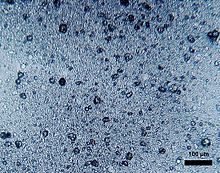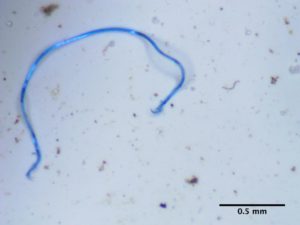 Did you know that many tea bags contain plastic or are made totally from plastic? And that tiny pieces of plastic (microplastics) from these teabags are released into the hot water when brewing tea? Canadian researchers found that a single plastic teabag releases about 11.6 billion microplastic and 3.1 billion nanoplastic particles into the water during normal tea brewing. And no one knows what this is doing to us long term, but it is doubtful that ingesting billions of tiny plastic particles in each cup of tea is beneficial to health. View it as an "unknown risk".
Did you know that many tea bags contain plastic or are made totally from plastic? And that tiny pieces of plastic (microplastics) from these teabags are released into the hot water when brewing tea? Canadian researchers found that a single plastic teabag releases about 11.6 billion microplastic and 3.1 billion nanoplastic particles into the water during normal tea brewing. And no one knows what this is doing to us long term, but it is doubtful that ingesting billions of tiny plastic particles in each cup of tea is beneficial to health. View it as an "unknown risk".
The researchers point out that water is frequently at or above 95 degrees C (203 degrees F) when brewing tea, and that "food grade"plastics degrade or leach toxic substances when heated above 40 degrees C (104 degrees F). They tested 4 different commercial teabags in 95 degree C water for 5 minutes. Note: Boiling water is 100 degrees C or 212 degrees Fahrenheit. On the other hand, the researchers noted that few plastic particles were released into room temperature water.
Microplastics are particles ranging from 100 nm to 5mm in size, while nanoparticles are particles ≤ 100 nm in size. The researchers found that many, many more plastic particles were released into the water from the teabags than what has been reported in other foods (e.g. salt or bottled water).
There is another reason to also avoid plastic teabags - if the plastic contains phthalates (endocrine disruptors), it will leach them into the hot water. Which, of course, we are then drinking.
What to do? Just stick with the traditional paper teabags. But you'll have to do research to find one that has zero added plastic. Some bags may appear to be paper, but plastic may be coating the paper, or in the glue sealing sides of the bag. Or drink tea made from loose leaf tea. By the way, any company that advertises its tea bags as "silky", "silken sachets", or "mesh" is using plastic tea bags. There is no silk used. Also, assume that any company that won't tell you if it uses plastic in the tea bags, has plastic in the teabags.
Nowadays many foods come in plastic pouches that are meant to be heated - keep in mind that they probably all leach plastic particles into the food or liquid. If the idea of ingesting multitudes of tiny plastic particles concerns you - avoid heating foods in plastic pouches or containers. Instead, transfer into a glass, stainless steel or iron container for heating.
From Science Daily: Plastic teabags release microscopic particles into tea ...continue reading "Are You Drinking Tiny Plastic Particles In Your Tea?"


 This is part 2 of posts about tiny particles of plastic (microfibers) in our water - which is a form of water pollution. These plastic fibers are smaller than 5 mm, and are
This is part 2 of posts about tiny particles of plastic (microfibers) in our water - which is a form of water pollution. These plastic fibers are smaller than 5 mm, and are